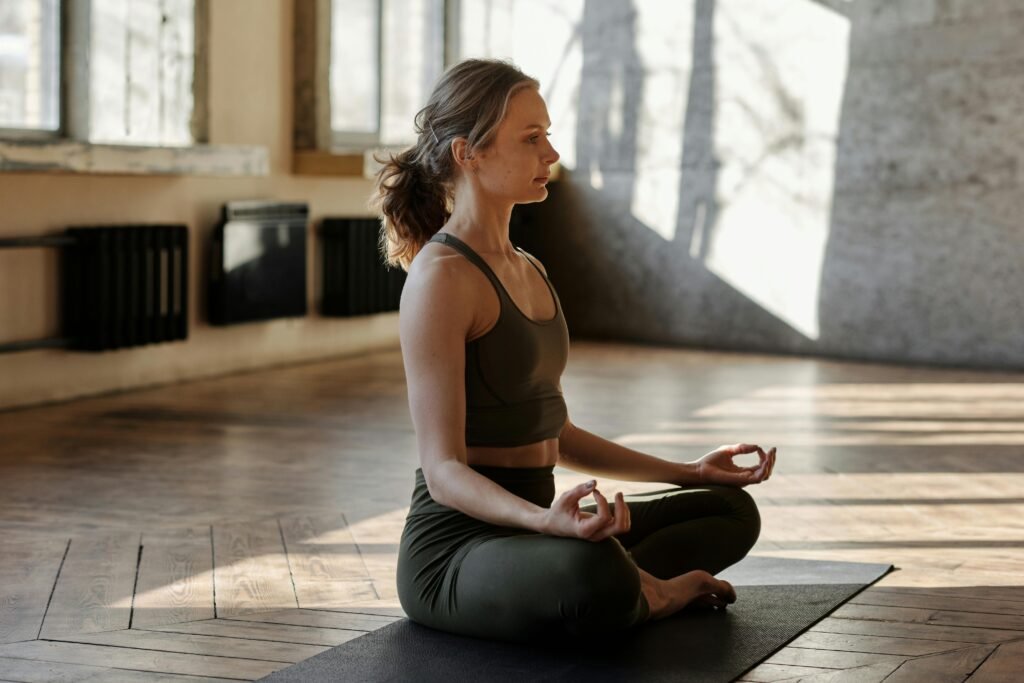
In today’s fast-paced world, stress, distraction, and mental fatigue are part of everyday life. Fortunately, mindfulness meditation offers a simple yet powerful way to bring calm, clarity, and focus back into your day. And the best part? You don’t need an hour-long practice to experience the benefits. A simple 5-minute mindfulness meditation can make a meaningful difference—especially for beginners.
In this article, we’ll explore what mindfulness meditation is, why it works, and how you can start a 5-minute practice today, even if you’ve never meditated before.
What Is Mindfulness Meditation?
Mindfulness meditation is the practice of paying attention to the present moment with openness and without judgment. Rather than getting caught up in thoughts about the past or future, mindfulness brings your attention back to what’s happening right now—your breath, sensations, and surroundings.
This practice is rooted in ancient Buddhist traditions but has been widely adopted in modern psychology for its proven benefits in reducing stress, anxiety, and depression.
Key elements of mindfulness meditation include:
- Focused attention (usually on the breath)
- Non-judgmental awareness
- Acceptance of thoughts and emotions as they come and go
Why 5 Minutes Is Enough for Beginners
You might think meditation requires long periods of silence and stillness. In reality, short sessions are a great way to begin. Research shows that even just a few minutes of daily mindfulness practice can lead to noticeable improvements in mental well-being.
Benefits of a 5-Minute Practice:
- Reduces stress and anxiety levels
- Improves focus and concentration
- Enhances emotional regulation
- Helps develop a habit that can grow over time
- Accessible and sustainable for busy lifestyles
For beginners, 5 minutes is manageable and builds consistency without pressure.
How to Prepare for Your 5-Minute Mindfulness Meditation

Before you begin, it’s helpful to set up a comfortable and quiet space. Here are a few tips to get started:
1. Choose Your Space
Find a quiet, comfortable spot where you won’t be disturbed. This could be a chair, cushion, or even the edge of your bed.
2. Set a Timer
Use a timer so you’re not distracted by checking the clock. Choose a gentle alarm tone.
3. Assume a Comfortable Posture
Sit upright but relaxed. Keep your back straight, shoulders relaxed, and hands resting on your lap or knees.
4. Minimize Distractions
Put your phone on silent or airplane mode. You may also dim the lights or close your eyes if that helps you focus.
Step-by-Step Guide: 5-Minute Mindfulness Meditation
Follow these simple steps to begin your practice:
Minute 1: Settle In
- Take a few deep breaths in through your nose and out through your mouth.
- Allow your body to relax and settle.
- Gently close your eyes (optional).
Minute 2: Focus on Your Breath
- Bring your attention to your breathing.
- Notice the sensation of air entering and leaving your nose.
- Observe the rise and fall of your chest or belly.
Minute 3: Notice Wandering Thoughts
- Your mind will wander. That’s normal.
- When it does, gently guide your attention back to the breath.
- Avoid judging yourself or getting frustrated.
Minute 4: Scan the Body
- Bring awareness to your body, starting from your feet to your head.
- Notice any areas of tension or sensation without trying to change them.
Minute 5: Return and Reflect
- Gradually bring your attention back to your surroundings.
- Gently open your eyes (if closed).
- Take a moment to reflect: How do you feel? What did you notice?
Tips for Staying Consistent
Consistency is key when it comes to mindfulness. Here are some tips to help you maintain a daily practice:
- Schedule it: Attach your 5-minute practice to an existing habit (e.g., after brushing your teeth).
- Use reminders: Sticky notes, calendar alerts, or mindfulness apps can help.
- Start small: Don’t aim for perfection. Just showing up is progress.
- Track your progress: Use a journal or app to note how you feel after each session.
Common Challenges and How to Overcome Them
“I can’t stop thinking.”
You’re not supposed to. The goal is to observe thoughts, not eliminate them.
“I get restless or bored.”
That’s part of the process. Acknowledge it and return to the breath.
“I forget to practice.”
Set a reminder or tie your practice to a daily routine.
“I’m not doing it right.”
There’s no perfect meditation. The effort to be mindful is enough.
Conclusion
Mindfulness doesn’t have to be complicated or time-consuming. A simple 5-minute meditation can ground you in the present moment, helping you feel calmer, more centered, and better equipped to handle life’s challenges. The key is to start—and to keep showing up.
Give yourself five minutes. You deserve it.
Want more easy mindfulness tips? Check out our article on Simple Mindfulness Exercises for Daily Life.
